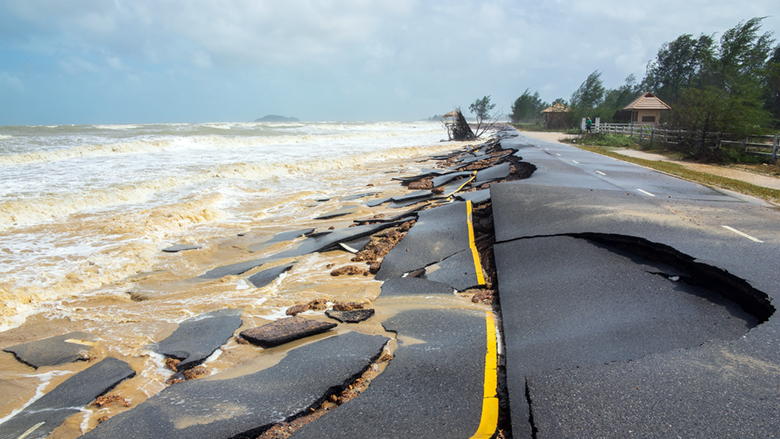Downald the full report (PDF): Climate and Disaster Resilient Transport in Small Island Developing States: A Call for Action
Key Findings
Climate and disaster risk: Small Island Developing States among the world’s most vulnerable countries
- Small Island Developing States (SIDS) are a group of countries located across the world in the Caribbean, Pacific, Africa, and Indian Ocean regions. They are all small in size, sparsely populated, and geographically isolated. Their small economies rely largely on tourism, fisheries, agriculture, and small-scale manufacturing activities.
- Due to their location, small size, and topography, SIDS are disproportionately exposed and vulnerable to natural disasters. Climate change is poised to increase the frequency and severity of extreme weather events, such as hurricanes, storm surges, extreme winds, and flooding.
Why focus on transport?
- When disaster strikes, damage to transport infrastructure typically accounts for a large portion of economic losses, resulting in huge fiscal strains on their small economies. In Dominica, for instance, transport assets are valued at 82% of GDP. In Fiji, 1/3 of the total government budget is spent on the transport sector.
- Because of limited physical space and financial resources, there is often little redundancy in the transport network of SIDS. Most of them are only equipped with one airport, one major port, and a few arterial roads. In that context, damage to one critical asset can quickly paralyze traffic to, from, and around the island.
- In addition to the cost of physical damage to the infrastructure, transport disruptions can cripple key economic sectors like tourism, fishing, or agriculture, and cut off access to healthcare, education, and other essential services.
- Damage to critical assets like roads or runways also impedes disaster recovery operations, further increasing the overall vulnerability of communities living in SIDS.
- Enhancing transport resilience would bring significant benefits to SIDS by reducing losses in both assets and well-being. As an example, the study estimates that the adoption of a transport resilience package in Tonga could reduce well-being losses by as much as 25%.
The way forward
- To minimize disaster losses, the report stresses the need to improve the management of transport assets and to “plan for the unknown.” In the face of a changing climate, disasters risk needs to be taken into consideration at all stages of the infrastructure lifecycle, from the planning phase to engineering, operations, maintenance, and contingency programming.
- This approach could involve mapping hazards, identifying highly vulnerable assets, understanding the magnitude of the consequences of asset failure, planning to prevent disruptions rather than only reacting after disasters, and building back better after events.
- In particular, the report highlights the importance of investing in maintenance and upgrading construction standards for critical assets as a way of reducing rehabilitation costs and freeing up resources.
- To cope with less frequent but high-impact events, SIDS will also need easier access to financial instruments such as risk-sharing facilities, contingent credit, or international aid. This will help offset reduced tax revenues after disasters and make it easier for SIDS to restore service along critical transport corridors.
- Building resilient communities requires more than safeguarding transport assets and operations. Policymakers must limit the dependency of SIDS on vulnerable infrastructure and protect people through improved social safety nets, increased access to financial systems, and access to insurance for natural disasters.
A call for action
By drawing on case studies from SIDS and other countries, the report showcases a wide range of best practices and demonstrates there is already ample experience on how to move toward more resilient transport. The international development community has a key part to play in disseminating this knowledge and providing the resources that will be required to scale up innovative solutions.

